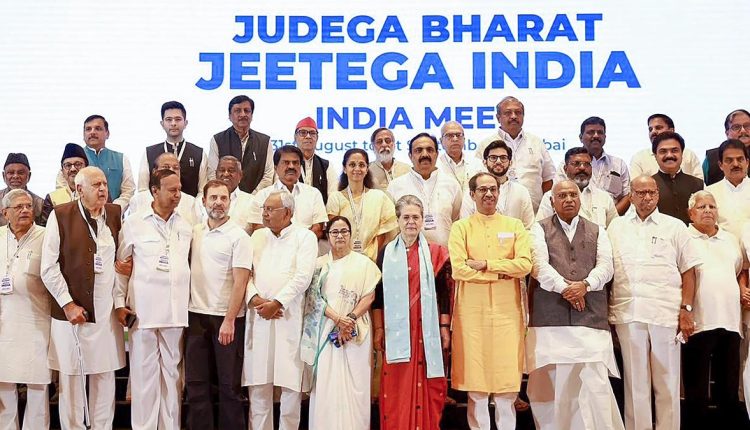NewDelhi: The famous and shiny INDIA (Indian National Developmental Inclusive Alliance) alliance, formed with much hype before the 2024 Lok Sabha elections, is turning to dust and some volatility, as declared by political analysts.
The culture wars of the left’s physical spaces have direct effects on the rights’ digital space. Existing dialogues in the physical spaces of the left affect the content of the rights’ digital space debates.
These feuds, particularly in Delhi, where three major alliance partners—the Samajwadi Party, Trinamool Congress, and Shiv Sena (UBT)—have thrown their support behind the Aam Aadmi Party (AAP), only meet headlong opposition from their supposed ally, the Congress party. This equation has been re-maximised by the remarks of key opposition figures, like former Jammu and Kashmir Chief Minister Omar Abdullah, who suggested disbanding the alliance altogether.
The conflict within the alliance has resulted from three root causes. To begin with, this coalition was first set up purely to fight the BJP in the general elections, and it lacked any ideological groundwork. Secondly, the regional parties have been increasingly cautious about giving a leg up to the Congress party, which has performed poorly in a proper fight against the BJP. Lastly, the alliance has mistakenly managed to enhance the name of Rahul Gandhi on the national scene while potentially slowing down the aspirations of the direct leader.
The Congress party’s better performance in the most recent 2024 Lok Sabha elections, where they were just a breath away from doubling their count to 99 seats, has ironically played a role in destabilising the alliance. This victory, partly due to the seat-sharing agreements with the regional parties, has introduced a new variable to the alliance that wasn’t there before. For instance, Akhilesh Yadav, the head of the Samajwadi Party, whose party emerged as the third largest in Parliament, might be pondering the logic behind giving Congress 17 seats in Uttar Pradesh.
Latest comments on the alliance by some key players have gone much further to highlight the fragile nature of the bloc. Tejashwi Yadav, the RJD boss, candidly stated that the INDIA alliance is only for the Lok Sabha elections, and Omar Abdullah reminds us of the uncertainty about the coalition’s future direction and leadership.
With no national polls until 2026, the alliance seems to lose its primary hold. The elections in states such as Delhi and Bihar, where regional variables and state-level alliances exist alongside the national coalition, have come next.
The removal of original alliance builders such as Nitish Kumar of JD(U) and Jayant Chaudhary of RLD even before the 2024 elections proved that the coalition is fragile. Fresh disagreements over some issues, including the Adani protests and the criticism of EVMs, have simply widened the gap between them.
Political analyst Rasheed Kidwai, who in December 2024 stated that the alliance was “dead for all practical purposes,” seems to have been correct. As regional parties rethink their associations with the Congress and centre their attention on state issues, the development of the INDIA bloc as a flag in the political scene seems to evaporate over time, except for the grandeur it showcased in the beginning, and will be stored only in memory.
The scattered opposition will serve as a lesson on how hard it is to manage political alliances in the complexities of Indian politics, where regional interests must balance with national ambitions, especially when they explode in the end.



Comments are closed.